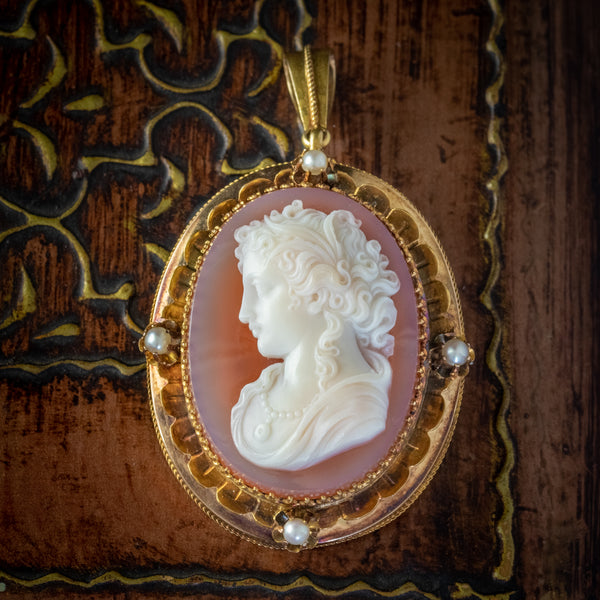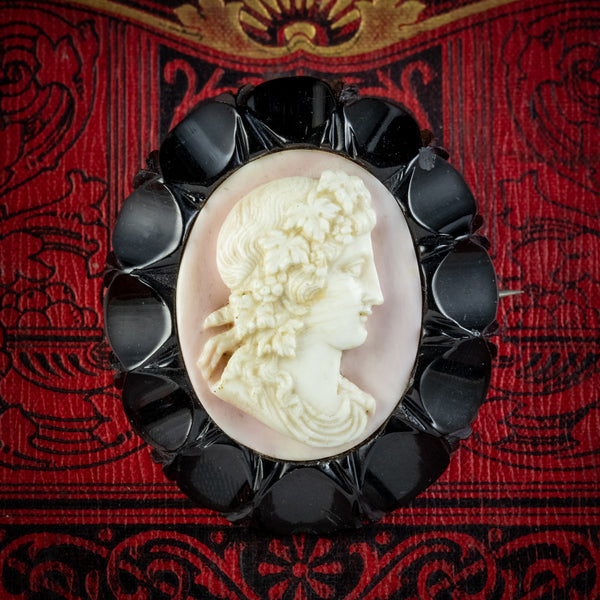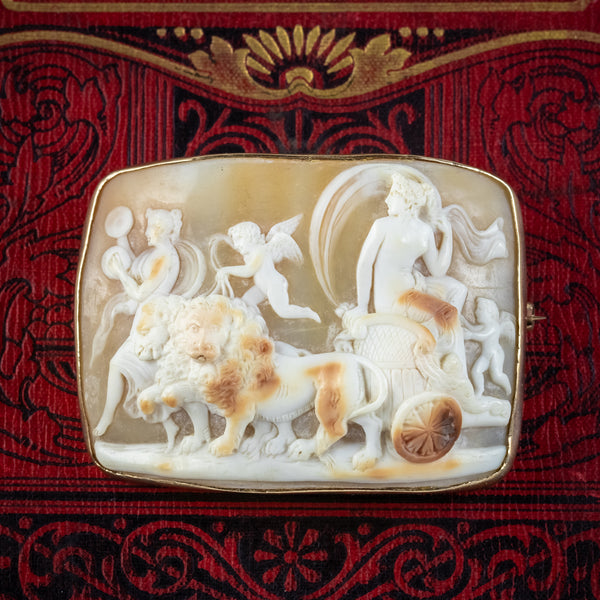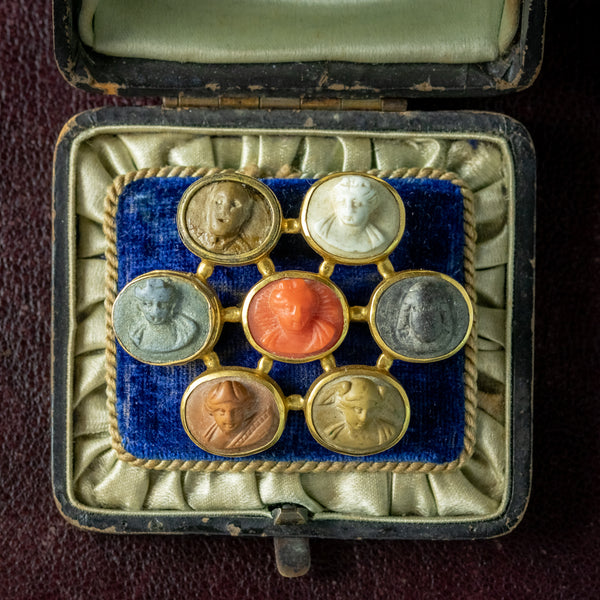The Process of Cameo Carving

Cameos are pieces of jewellery comprised of an oval piece of shell or stone which has been intricately carved with a portrait. Typically they depict figures from mythology such as ancient Greek gods or muses but some may contain the likeness of a historical figure. A cameo may be a simple likeness of a face in profile or a more complex scene with multiple figures.
What are cameo carvings?
Cameo carvings are carved in relief, which means that the figures protrude from the background. This is why the vast majority of cameos are carved from shell, particularly bullmouth shell, which has differently coloured layers. As the layers are carefully scraped away the result is a two-tone effect with the main figure protruding from a darker background.

What era do cameo carvings come from?
The art of carving cameos dates back thousands of years and some specimens carved into hardstone, lapis lazuli or other durable materials have survived to the present day. These ancient cameos are highly valuable as a window into the fashion and crafts of a long lost age.
Cameos became very popular in the Victorian era as they tapped into the population’s fascination with the ancient world. It is this period that gave rise to the vast majority of shell cameos as the material was widely available, however notable examples exist which have been crafted from rarer materials such as lavastone and jet

These pieces were often bordered with simple gold cases, as the design was intended to draw attention to the workmanship of the carving itself. More extravagant examples with elaborate carvings and borders inlaid with gemstones also exist, and can command a high price.
What is the process of cameo carving?
When a carver was beginning work on a new cameo they would often deal with specialist divers who would provide the raw shell needed. Selecting the right shell was crucial and it took many years of experience to reliably select the perfect material.

Once a decision had been made the section of shell to be used was carefully cut and ground into an oval or circle depending on the design. Larger pieces were favoured for more complex scenes as they could more easily accommodate the design, but many carvers took great pride in working at a smaller scale.
Regardless of scale a cameo carving is a time consuming and delicate process. A single error could potentially ruin the entire piece, so a high degree of focus had to be employed throughout. Fine steel tools were necessary to cut into the surface and bring out the form that the jeweller desired, and it took many years of consistent practise to create pieces that were truly worthy.
After the carving was completed finished Victorian cameo brooches were polished and cleaned with oil to bring out the natural finish of the shell and a ribbon of gold was wrapped around it in preparation for mounting in one of our pendants or antique cameo brooches for sale.

Many beautiful examples of antique cameos can be found, and the process of creating them continues to this day. Even with the advent of modern machinery most cameos created today still use the hand-carving techniques which have been employed for centuries.
Antique cameos can form a beautiful part of any collection, and at Laurelle Antique Jewellery we have many years of experience in finding the finest examples for our customers. You can view our full collection of cameos.
If you have any questions about the pieces which we sell feel free to get in touch on England: 0333 700 4500 or send us an email via enquiries@antiquejewellerygroup.com. Our team is always happy to help!



